A letter from a President, a sketch of City Hall: Memorabilia being donated to the city
The Bulletin has been part of Norwich’s history, in one form or another, for over 200 years. When the paper left Franklin Street in 2014, most of the archival material was given away or kept in storage. However, a few pieces made it over to the current office, which we will leave this month.
The Bulletin is shifting to a largely-remote newsroom, but it will return to its Franklin Street roots and maintain a presence there as part of Foundry 66. In order to ensure that our treasures and historical documents are preserved, most items have been given away to Slater Memorial Museum, Otis Library, and other local organizations.
Here is a look at some of The Bulletin's treasures and artifacts.
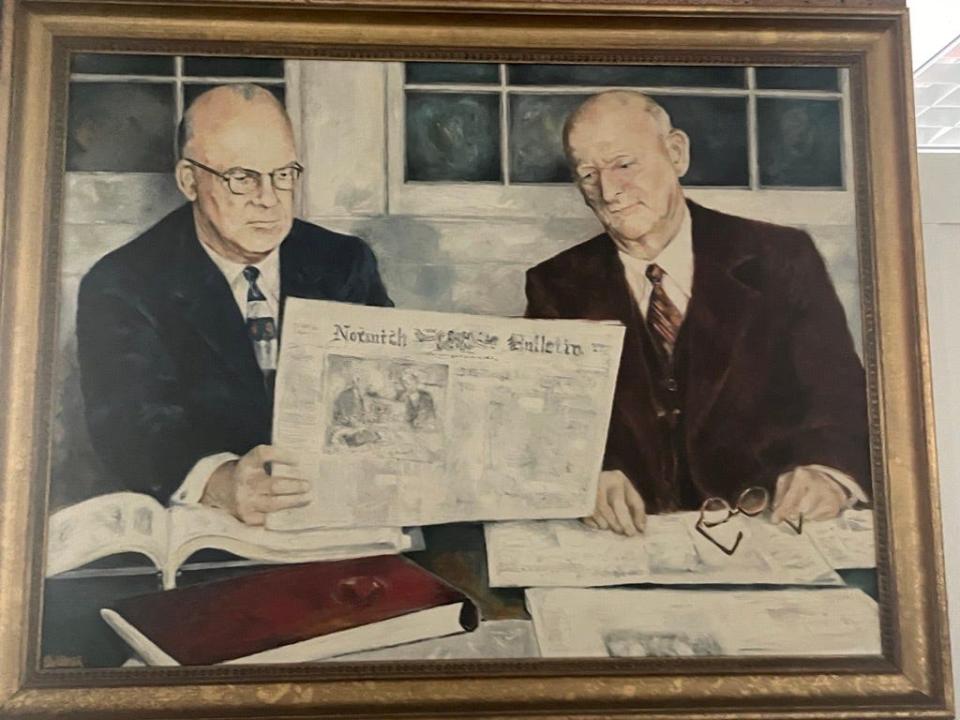
Oat and Noyes paintings
Before The Bulletin became a corporate-owned paper in 1980, the Oat and Noyes families owned it for over 80 years. Two paintings from our conference room are relics of that era. Both paintings feature the editor-in-chief and the publisher at the time of the painting looking at a copy of The Norwich Bulletin.
One is an oil or acrylic painting; relatively simple, with the only legible words being on the masthead.
The other is an oil painting showing finer details, like the headings on articles, and the ash on the lit cigar in Charles Noyes’ hand. The oil painting, behind glass, has deteriorated as chips of paint fell to the bottom of the frame. The painting includes a plaque, stating it was made in 1936 by John F. Byrne "8-Bells" for his friends Charles D. Noyes and William H. Oat, the publishers of Norwich Morning Bulletin and Evening Record.
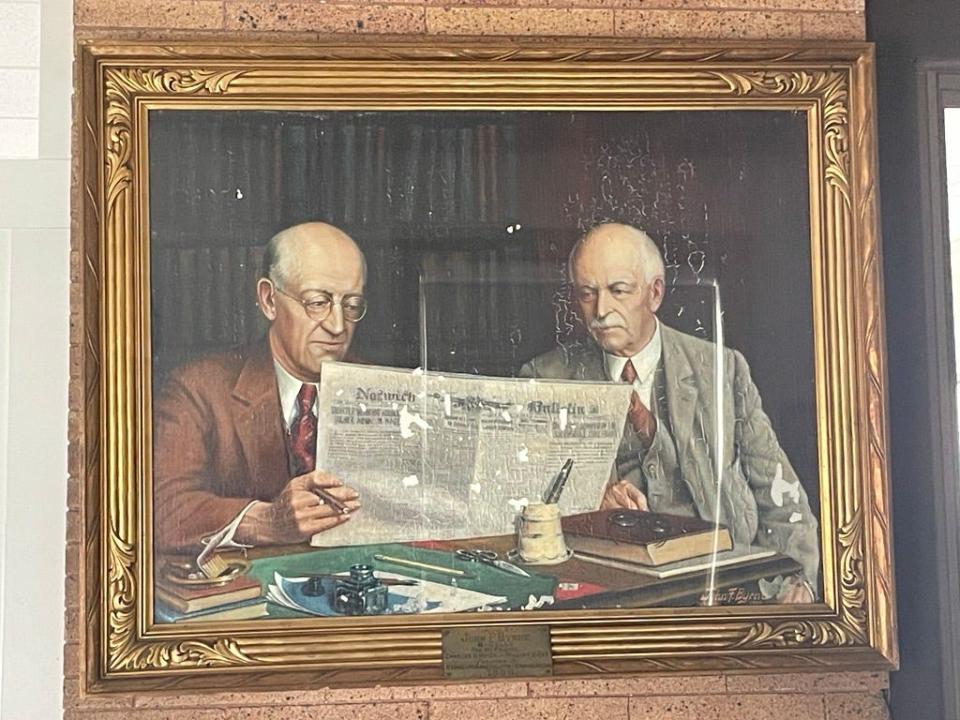
The painting was made by Byrne near the end of his life. Byrne was part of a troupe of “acrobatic actors” named the Brothers Byrne, according to a poster in the Library of Congress. Byrne also made two silent-era films, and died in 1937, according to IMDb.
Norwich City Hall print
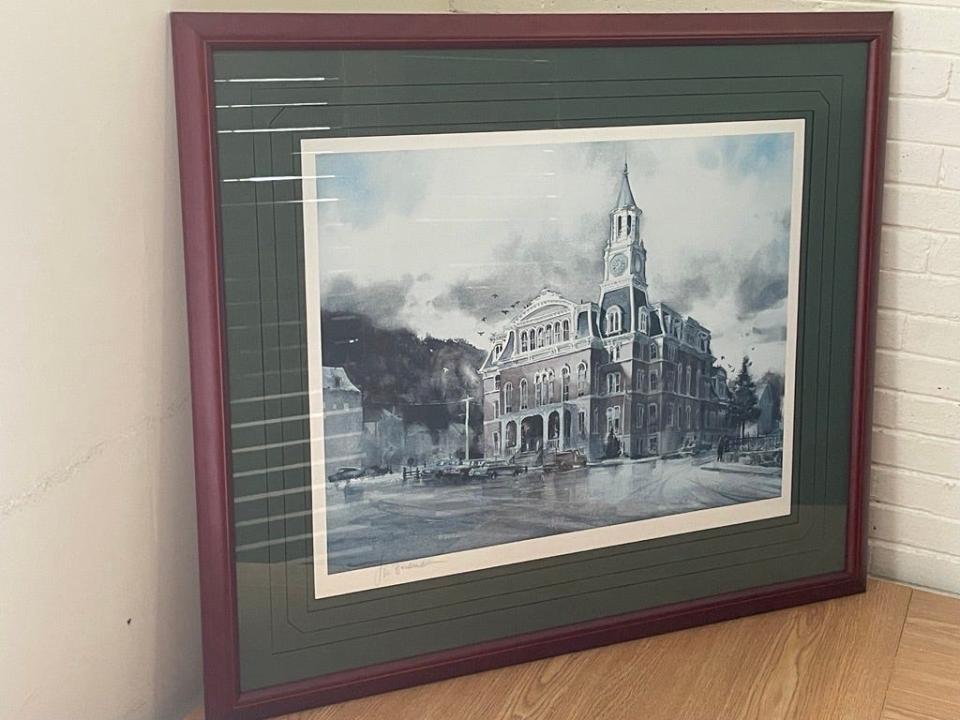
This print of Norwich City Hall features the parking lot before the David Ruggles Freedom Courtyard was built. It was created by Lou Bonamarte, who also signed the print in pencil. Bonamarte was an Old Lyme resident whose works consist of many watercolor scenes.
Bonamarte was born in 1933. He grew up painting watercolors, and pursued art as a career in 1955, after serving in the U.S. Army. He was a founder of the Lyme Academy of Fine Arts in 1975. Bonamarte passed away in 2020, according to the Madison Art Society’s Facebook Page
Newspaper vending machine
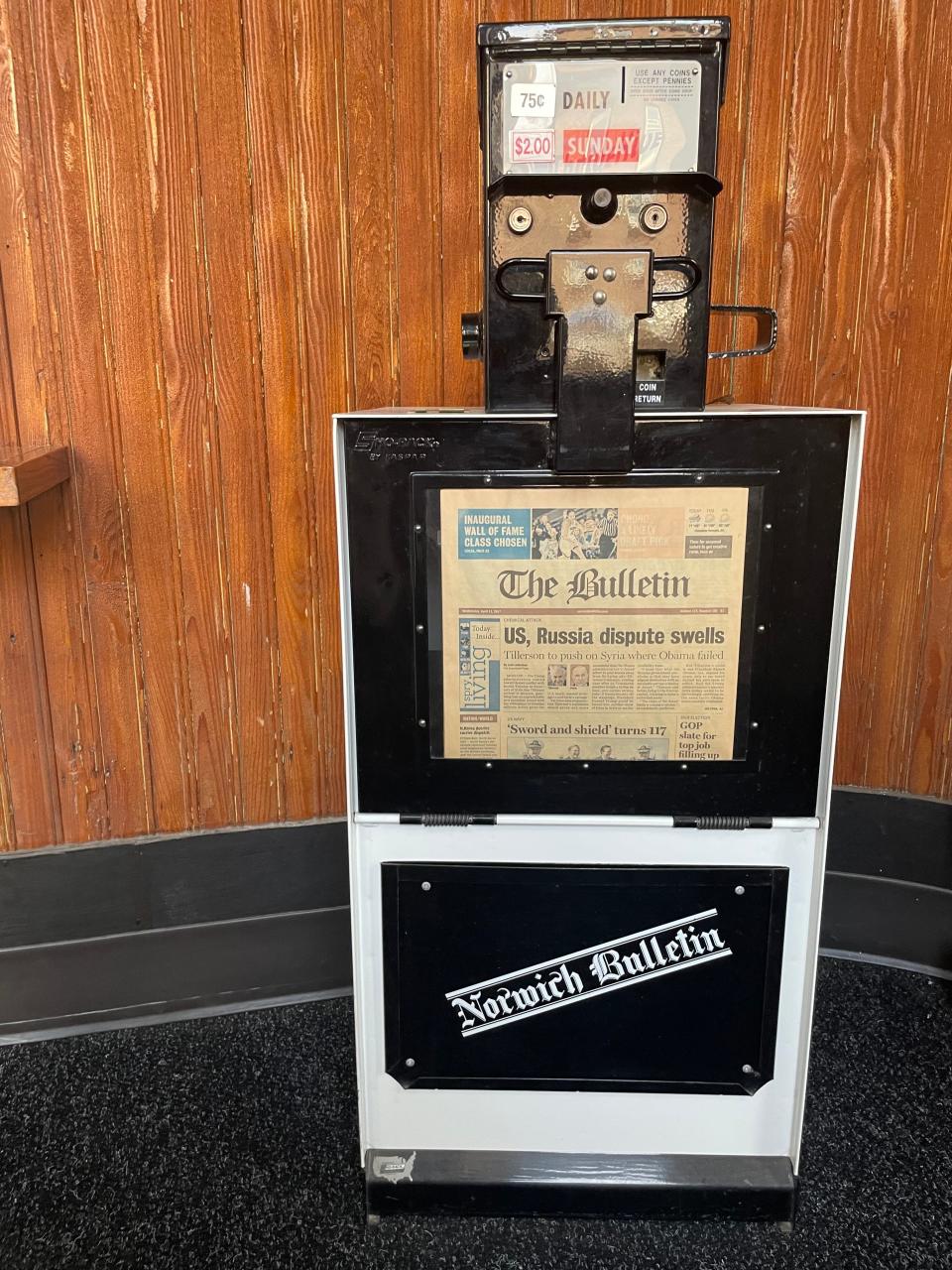
Sports Reporter Jimmy Zanor claimed this relic for himself. This is the last newspaper vending machine (that we’re aware of) with The Norwich Bulletin logo. It sat in the lobby of our current office. The faded newspaper in front is from April 12, 2017.
'Speedways Across the USA'
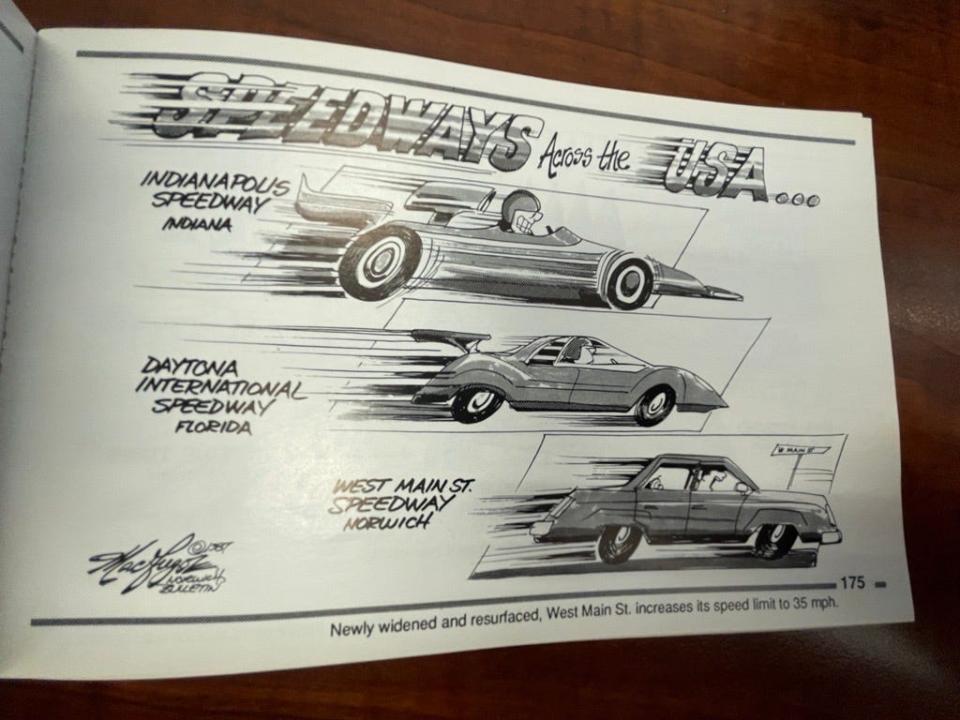
When the Norwich Bulletin owned 66 Franklin St., the paper was a much larger operation; we even had our own cartoonist, Doug MacGregor. This cartoon, still applicable to anyone driving on West Main Street, comes from “A Collection of MacGregor Editorial Cartoons from the Norwich Bulletin.” Reading it now is a reflection on local, state and federal politics in the 1980s.
MacGregor joined The Bulletin in 1980, shortly after graduating from Syracuse University. He stayed at The Bulletin for eight years, with some of his cartoons making it to USA Today, before joining another Gannett paper, the Fort Myers News-Press, and working there for over 20 years.
MacGregor is currently the cartoonist for The Naples Press.
A Presidential Letter
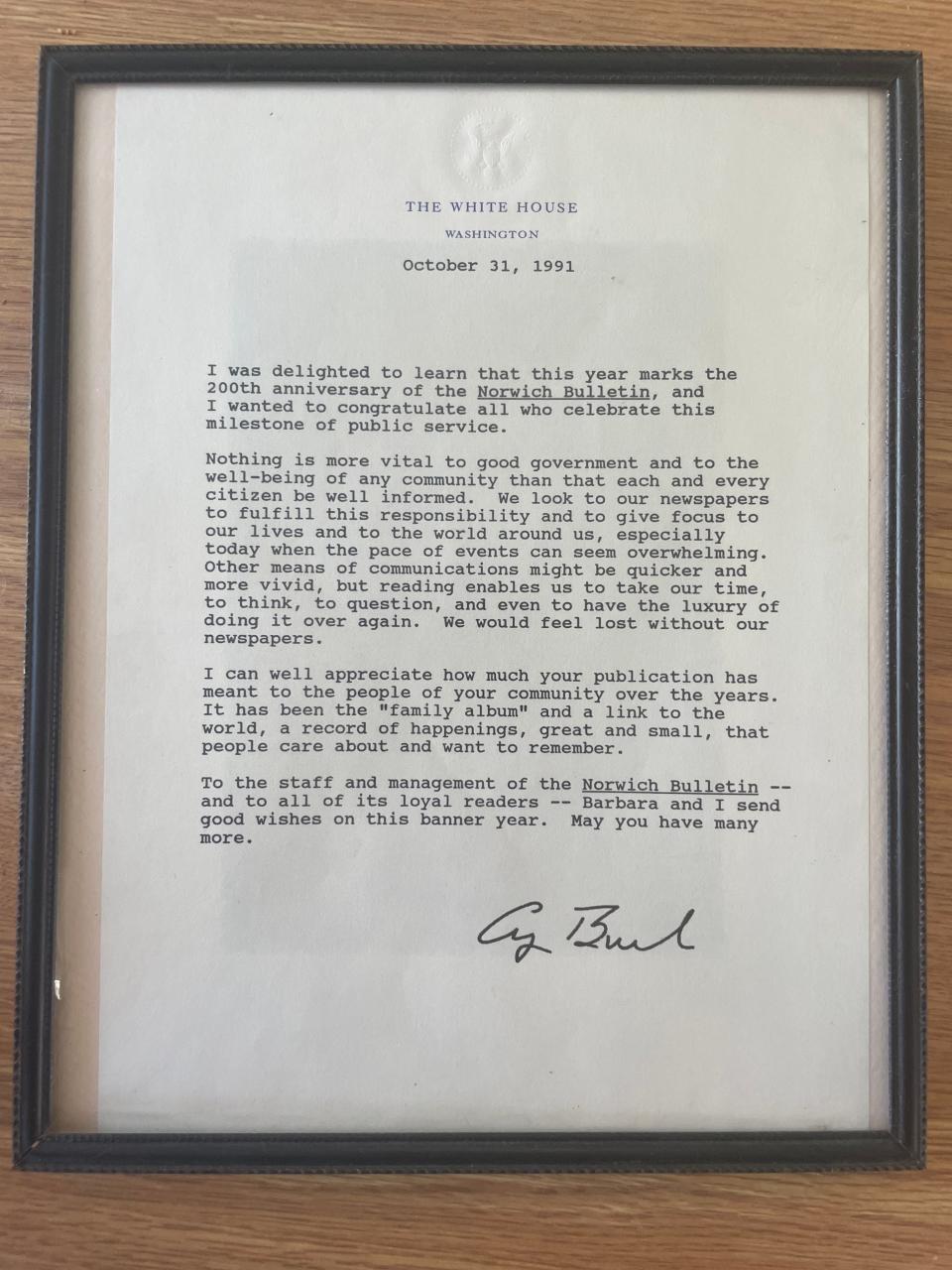
On Halloween 1991, then President George Herbert Walker Bush sent the Norwich Bulletin a letter, recognizing 200 years of service.
Bush wrote how important the newspaper is to the community, and its role in maintaining good government and a well-informed public.
"Other means of communication might be quicker and more vivid, but reading enables us to take our time, to think, to question, and even to have the luxury of doing it over again," he wrote. "We would feel lost without our newspapers."
The letter also features a Presidental Seal watermark at the top.
Let us give thanks
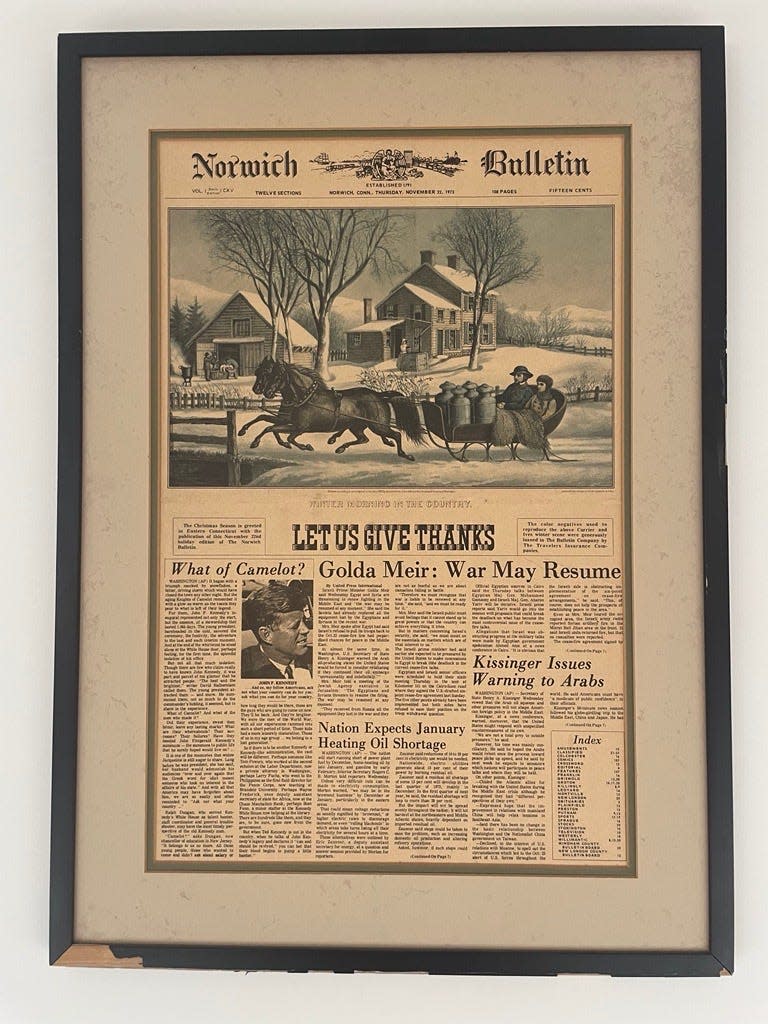
There are a few framed editions of The Bulletin in our collection. This includes the Nov. 22, 1973 issue. It features the old seraph masthead and Courier and Ives artwork, marking the start of the holiday season. Cover stories include a 10-year retrospective of U.S. President John F. Kennedy’s assassination and news on conflicts in the Middle East.
Another framed edition we have is Nov. 22, 1979, featuring a cover photo of Mystic Seaport employee Meta Fisher cooking Thanksgiving dinner in a colonial house, and a story about Montville resident Alice Blattler not wanting to pay taxes because her voter records stated she was deceased. Blattler died in 2004, according to her husband John Blattler’s obituary.
Hot off the press
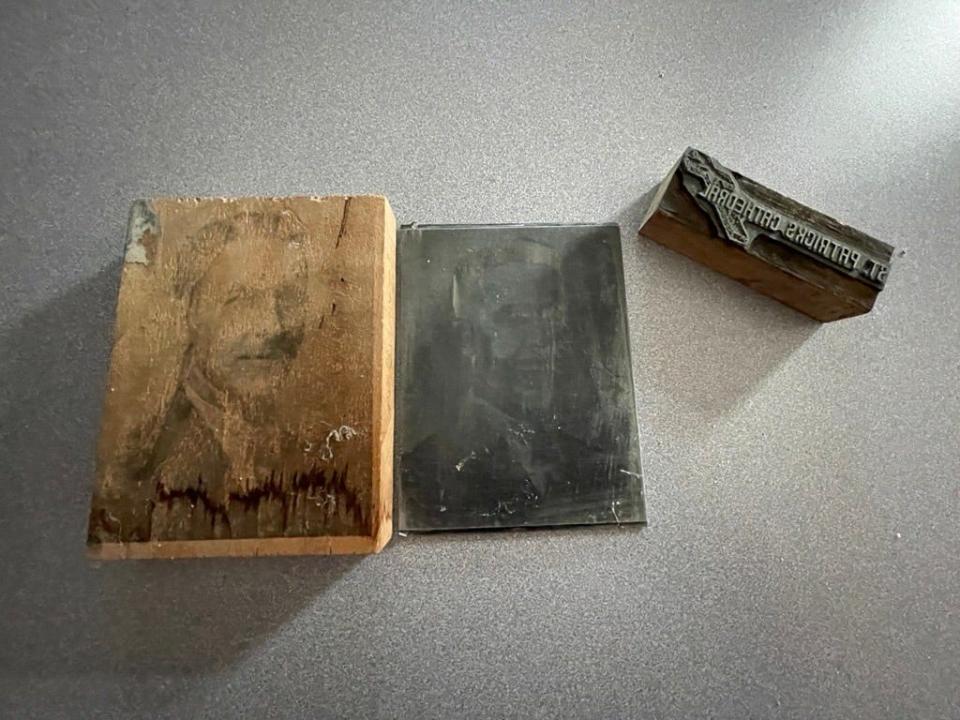
Because The Bulletin once printed its own papers, we still have a couple printing blocks. One is a graphic for St. Patrick’s Cathedral, and the other is a photograph of a man in a suit with the last name Zavistoski. The photo block has separated over the years, but it’s neat to see both sides of it.
Government reports
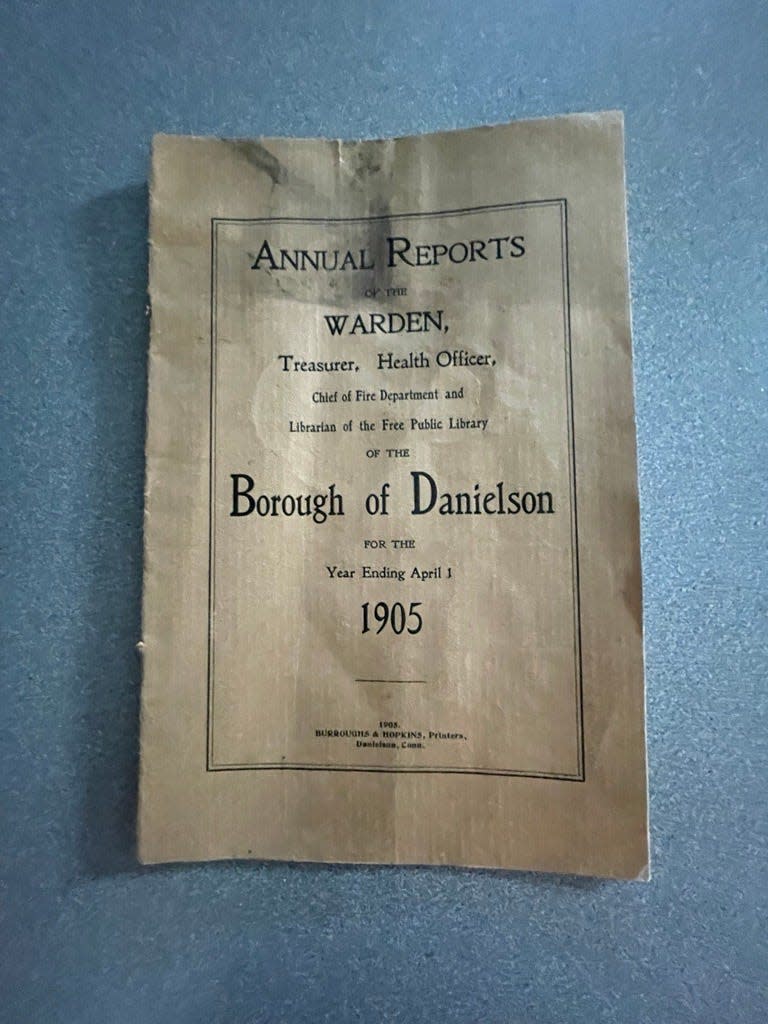
Throughout the office, there are copies of old city budgets and other government reports. The oldest one we have is a collection of Annual Reports for Danielson from 1905, ahead of a borough meeting. The pamphlet starts with an introduction by then-Warden of Danielson Edwin Palmer talking about economic development, infrastructure, and paying off $16,000 in debt. While the CPI Inflation Calculator only goes back to 1913, that would be the equivalent of over half a million dollars in today’s money.
The packet includes financial records for fiscal year 1905, an engineer’s report, and a report on the library, noting the popularity of the reading rooms and the reference department. A Health Officer’s Report from Daniel Johnson states the borough had three cases of diphtheria, two of scarlet fever and one of typhoid fever.
Jewett City Baptist Church
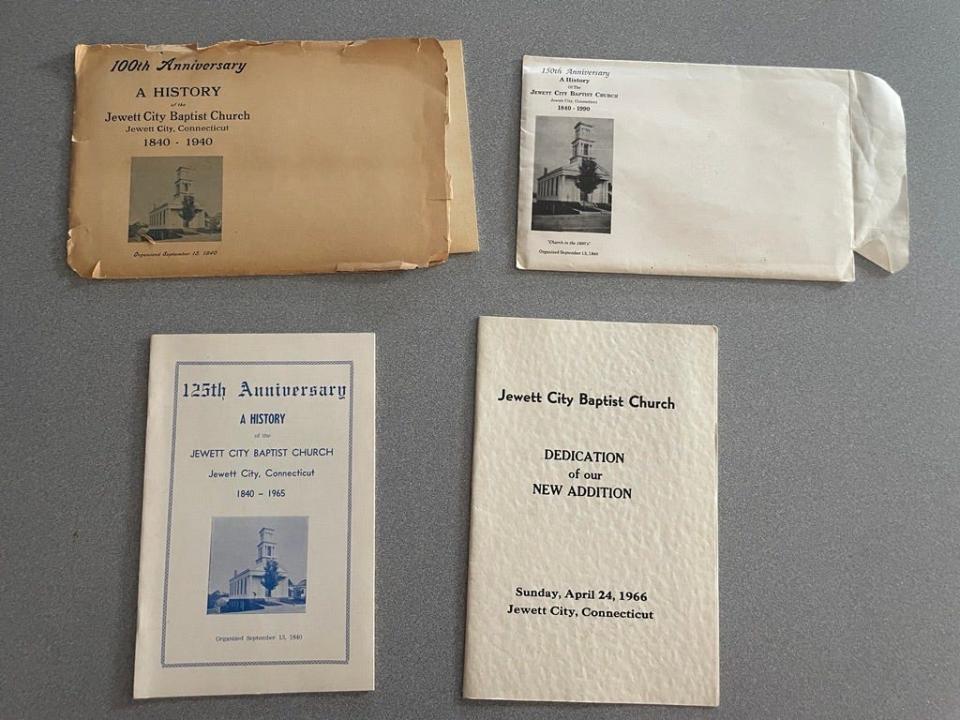
In November, The Bulletin published the story of the Jewett City Baptist Church dissolving after 183 years. To provide background on the church, Trustee and Deaconess Laura Zurn gave four booklets from the church to The Bulletin. Three of the booklets tell the history of the church on the 100th, 125th and 150th anniversaries. The fourth document is a program for a dedication of a new addition on April 24, 1966. The church needed a bigger space for Sunday school and Vacation Bible School, which took over two years to fund. The addition included classroom space, bathrooms, and a space that could serve as both classrooms and a chapel during the week.
Leaving Franklin Street
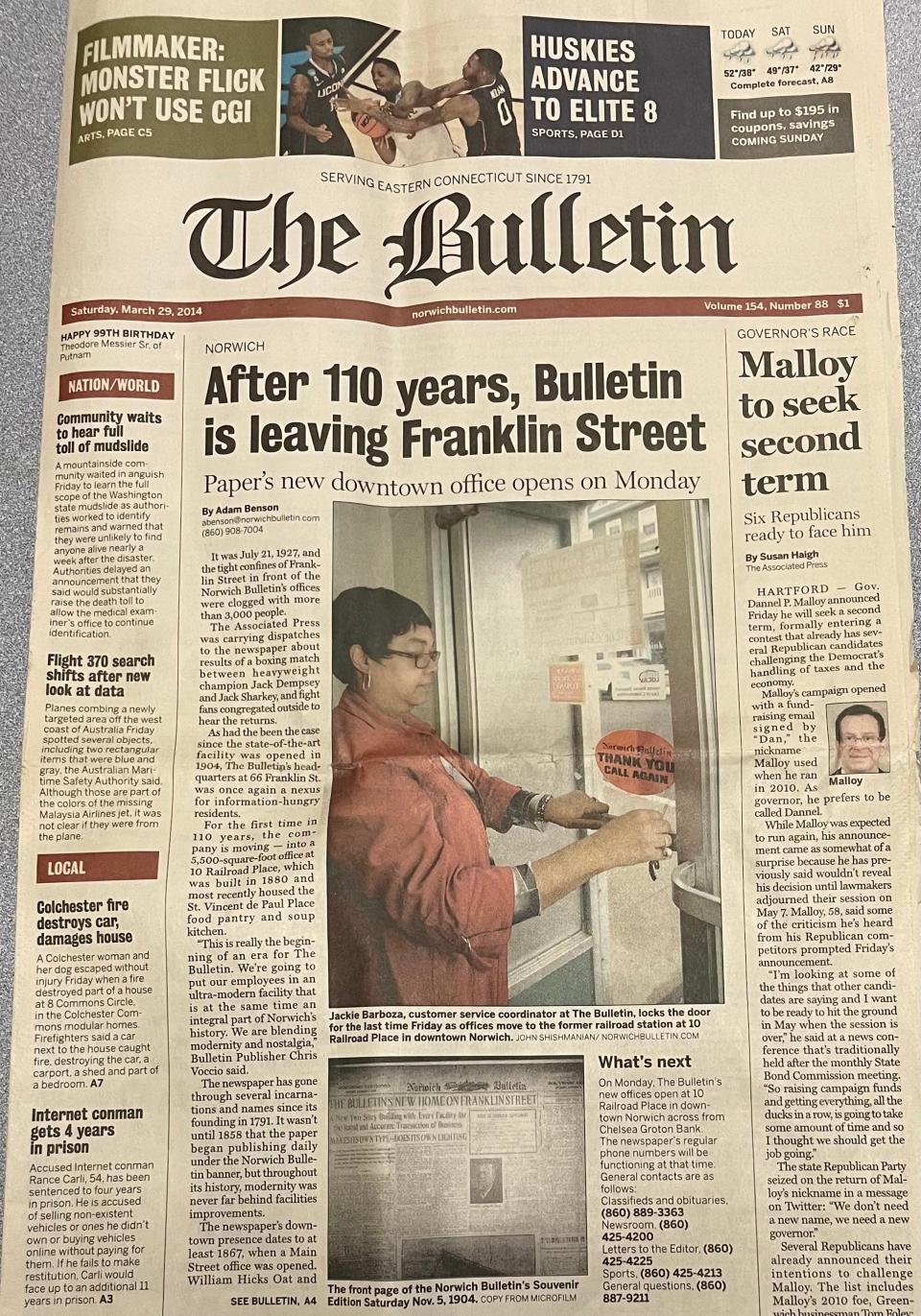
Now the home of the Norwich Community Development Corporation and Foundry 66, 66 Franklin St. was once The Norwich Bulletin’s office. An article from March 29, 2014 announced the opening of the 10 Railroad Place office, featuring a picture of then-Customer Service Coordinator Jackie Barboza locking the 66 Franklin St. entrance the day before.
The 66 Franklin St/ facility was built in 1904, after the paper’s first downtown office became too crowded. The Bulletin kept up-to-date with changing newspaper technologies over the years, including Cottrell 845 web offset presses that drew the attention of other publications from across the U.S. and the world, the article stated.
The Bulletin moved to 10 Railroad Place after printing was outsourced in 2009. The move to the former train station, which had been home to St. Vincent de Paul Place, was a combination of “raw, cold business decisions and nostalgia,” then-Publisher Chris Voccio said in the article.
The Rose of New England
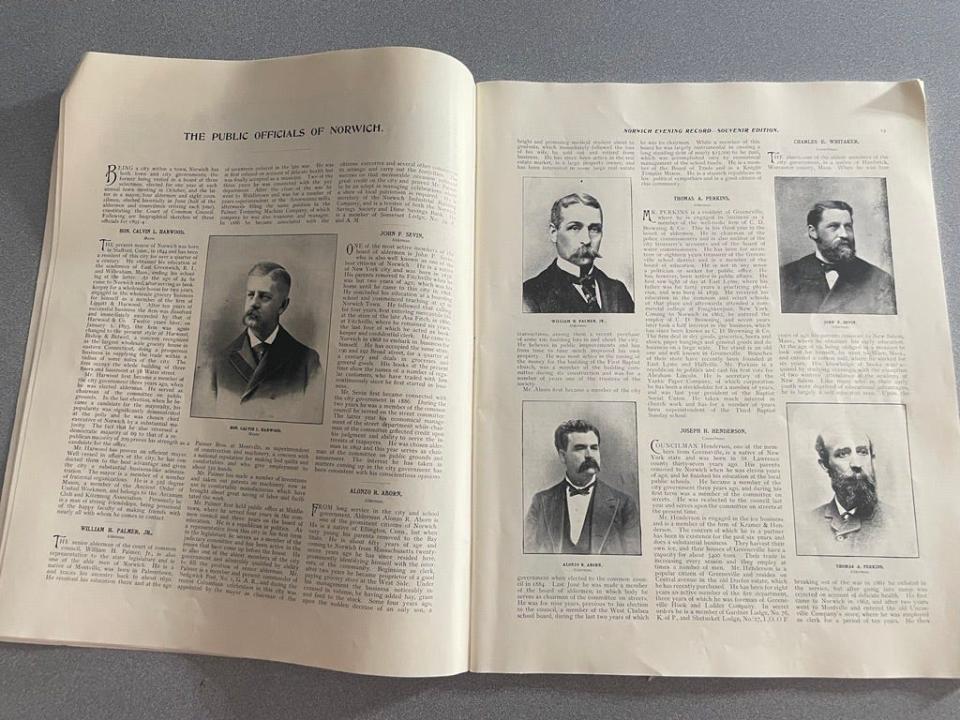
A former competitor, which The Bulletin bought in 1927, was the Norwich Evening Record. This 1894 book titled “Norwich: The Rose of New England,” gave detailed information on seemingly every relevant person, business and place in the city at that time, accompanied by numerous photos, including the residences of notable people.
The Evening Record’s final issue
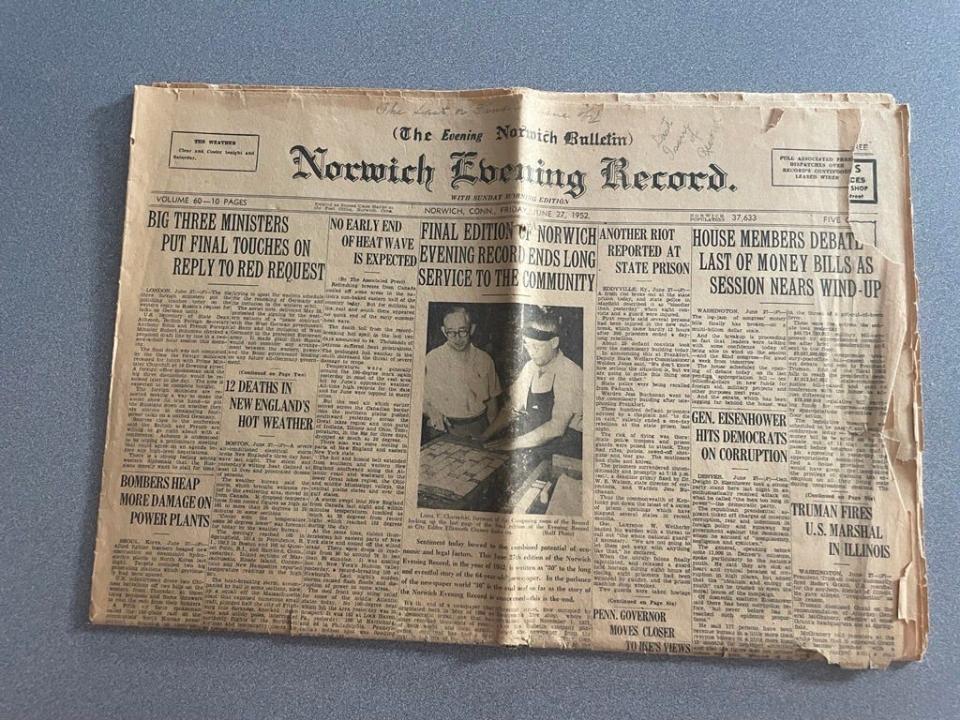
Once upon a time, morning and evening newspapers were commonplace. The Norwich Evening Record was discontinued on June 27, 1952. The final issue includes plenty of AP stories and local news, and a retrospective of the Evening Record, founded in 1888. The paper, less popular than The Bulletin itself, was discontinued due to rising costs in newspaper printing and new regulations on advertising, a goodbye article stated, including a photo of the typesetting for that issue.
The Norwich Evening Courier
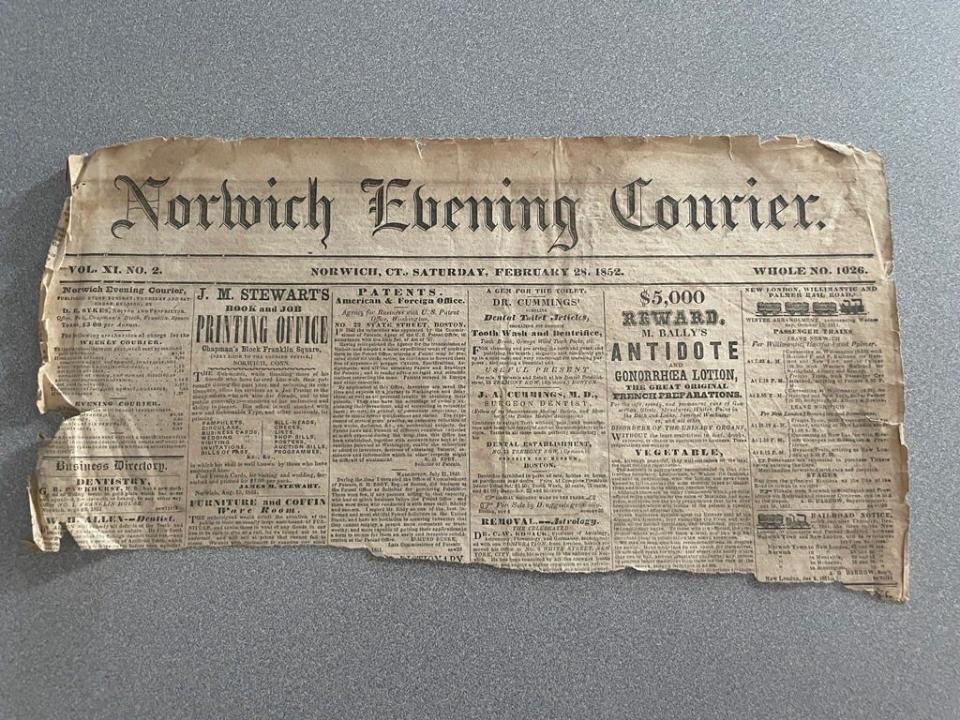
The oldest artifact in our possession is the masthead from the Feb. 28, 1852 edition of the Norwich Evening Courier, published Tuesdays, Thursdays and Saturdays by Dorson E. Sykes. His leadership lasted from 1841 until 1895, but the Courier existed in one form or another from 1796 until 1930.
The front of this fragment shows advertising for trains, printing and patent medicine, instead of stories. The back features stories on politics and the execution of New York City resident Otto Grunzig for poisoning his wife. There's a bit of irony here, as there is a story taken from The Providence Journal: back then, both papers operated as independent papers but now both are owned by Gannett.
The Fact Book
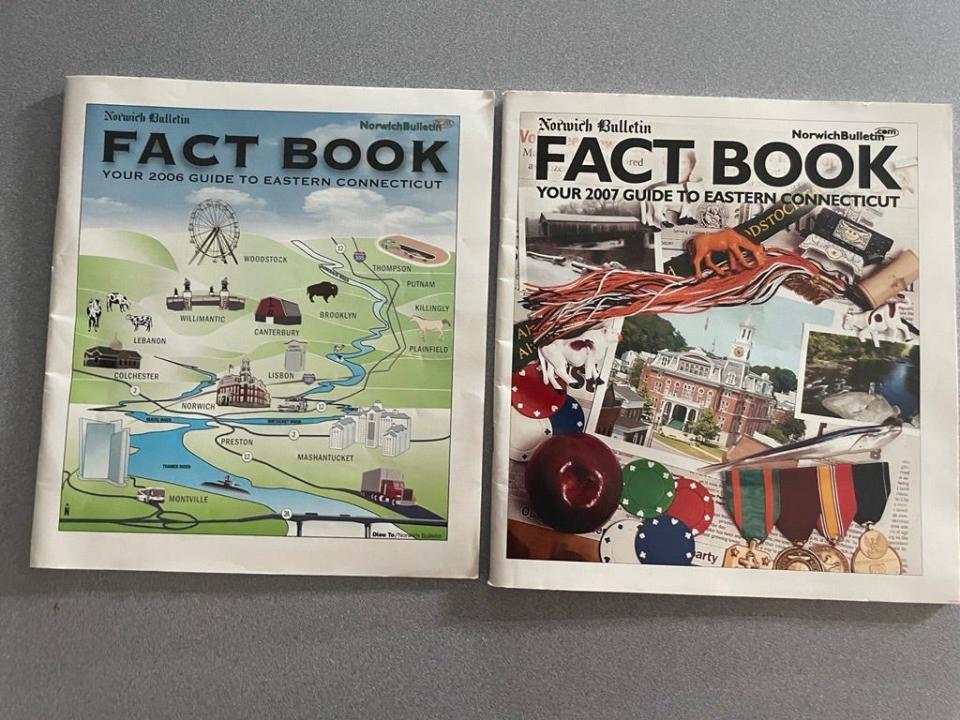
Perhaps inspired by the 1894 book, here are two factbooks from 2006 and 2007. The publications showed features on and collections of information for each town in The Bulletin’s coverage area, along with articles explaining regional issues.
The Tercentenary edition
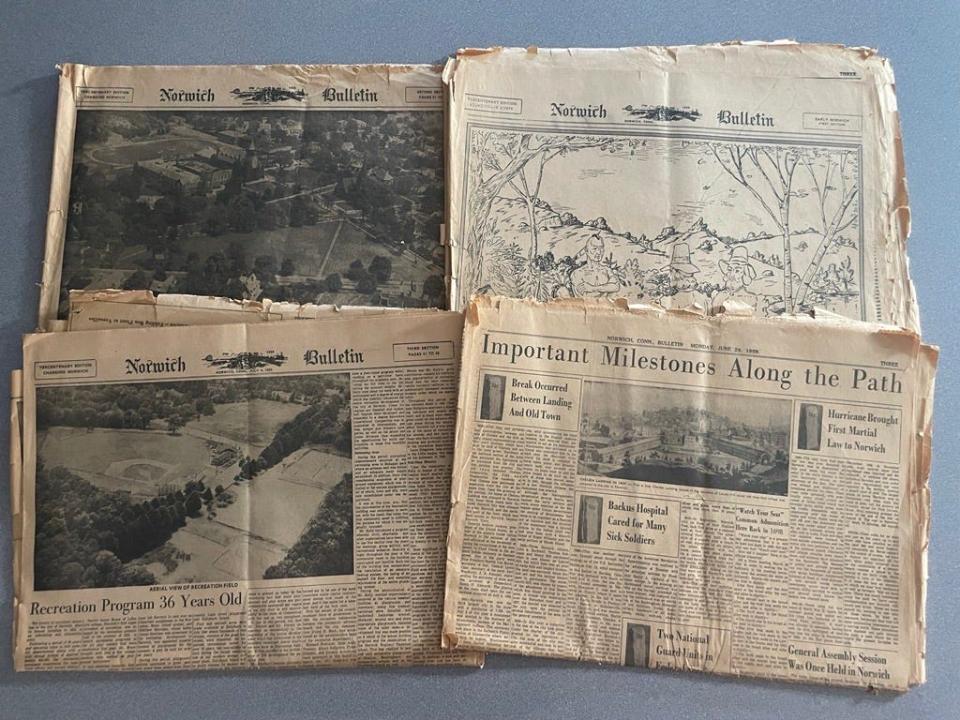
Norwich is an old city, settled in 1659. For the city's 300th anniversary, The Bulletin printed a special issue, that reads like a textbook on the history of Norwich, from colonial history to the Revolutionary and Civil wars, until the present day, detailing many upcoming events for the 300th anniversary. The souvenir edition includes the stories of the city government, religious, business, financial and educational institutions, and the obligatory article on Benedict Arnold’s place in Norwich’s history.
Some unusual aspects of Norwich’s history are also included, ranging from the city’s place in the history of a croquet variant called roque, Norwich then owning the U.S.’s oldest fire engine, some early Norwich city records inexplicably written in Hebrew, Sanskrit and Greek, and six U.S. Presidents to date having descended from Norwich residents.
The Memories books
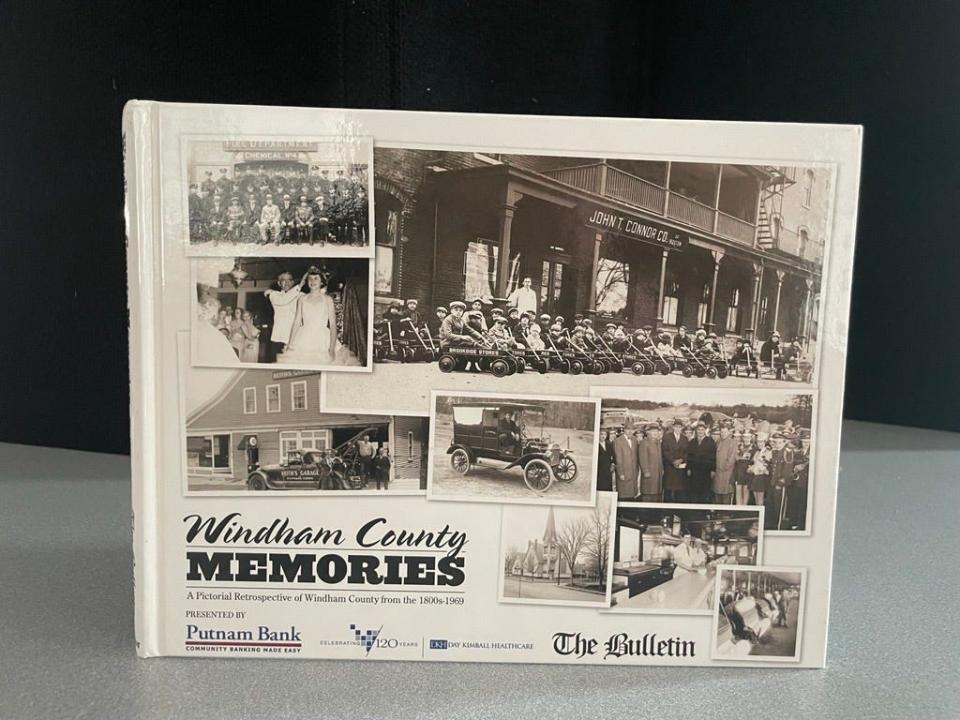
In 2014, The Bulletin released two “pictorial retrospectives,” one each from New London and Windham counties, collecting numerous black-and-white photos from residents and local historical societies and institutions, spanning the 1800s until the 1960s. The photos range from streetscapes and family events, to workplaces, disasters, and pivotal moments in local history.
Bill Stanley
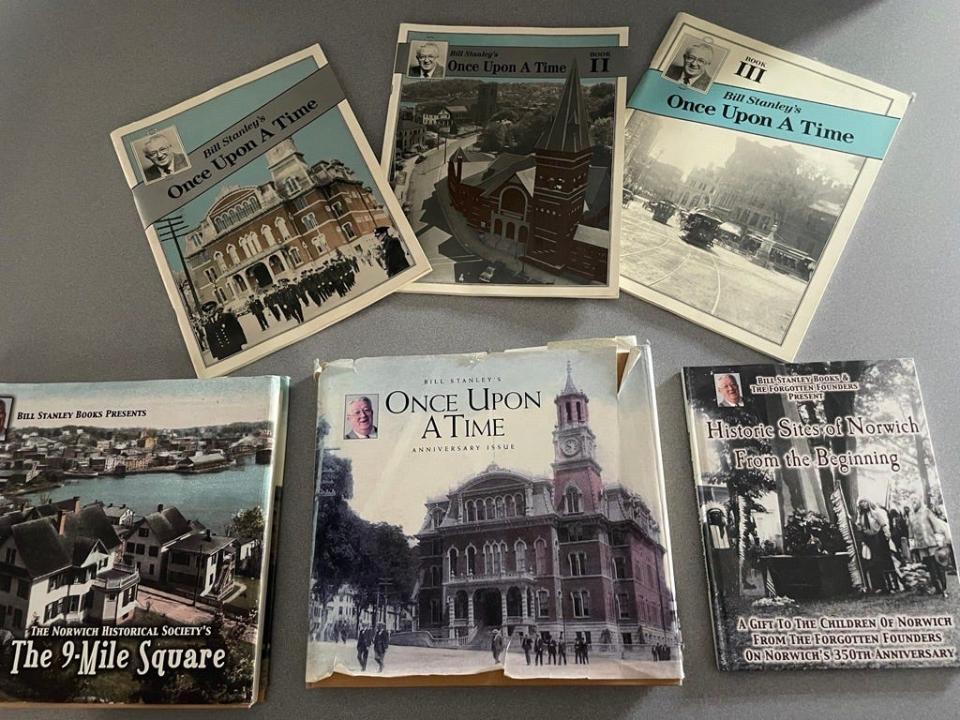
While many books in the Norwich Bulletin’s possession were written by local authors, the most notable writer among them is Bill Stanley. Stanley was always an advocate of Norwich’s history and community. As a kid, he was suspended three days from school for writing about the positive aspects of Benedict Arnold. Through his life, he told many stories of Norwich, from both the far past and in his own lifetime. In 1990, he began writing his Once Upon A Time in Norwich column, with help from his longtime assistant Fran Rondeau. It was so popular that the columns were compiled into a series of books. Stanley wrote 10 books in his lifetime, resulting in over $250,000 donated to charity.
Stanley’s day job was a stockbroker, but he had other impacts on the community. He served as a U.S. Marine and one term as a state senator. Stanley was a founder of St. Jude Commons, built on land he donated. He was once the president of the Norwich Historical Society, and sought to create a Founding Fathers museum in Norwich, recognizing the 10 U.S. presidents elected under the Articles of Confederation and the Continental Congress, including Norwich’s own Samuel Huntington. Stanley passed away in 2010 at age 80.
This article originally appeared on The Bulletin: Norwich Bulletin artifacts going to Slater Museum, Otis Library

